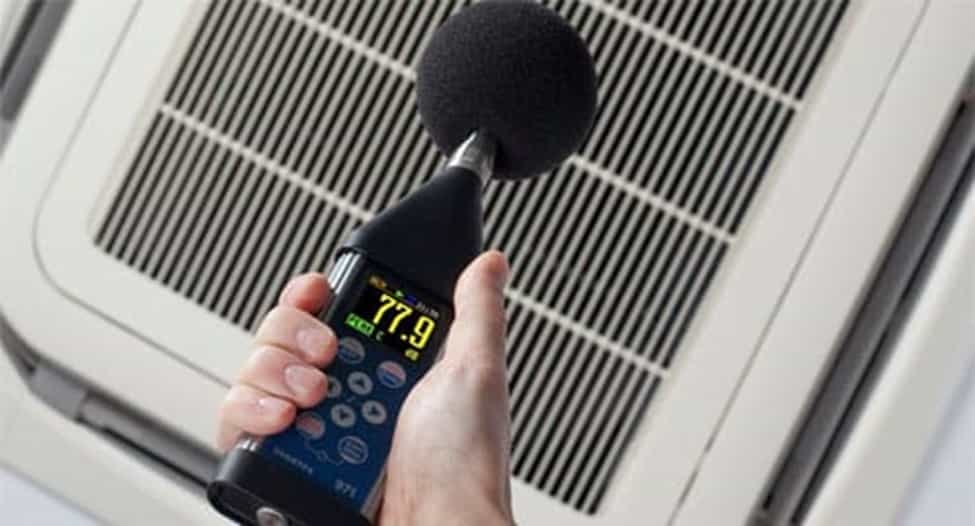During HVAC system commissioning, it is essential to demonstrate that the noise level of the room / space is within the specified design noise level. The sound pressure level (dB(A)) in an occupied space is typically measured using a sound level meter.
Whenever mechanical power is generated or transmitted, a portion of this power is converted into sound and radiated into the surrounding air. In HVAC systems, the major components such as fans, pumps, chillers, ductwork, piping, and motors can all be considered as sound sources.
A critical measure in such systems is to set a maximum permissible noise level for key equipment (e.g., fans, pumps, chillers) at a distance of 1 meter from the equipment’s boundary. This measurement is important because not all unsteady pressures generated by the vibrating surfaces of the equipment contribute to radiated sound. Some of these unsteady pressures “cling” to the surface and their intensity diminishes quickly as the distance from the source increases.
The region near the source, where non-radiating unsteady pressures remain significant, is referred to as the Acoustic Nearfield. Typically, this area extends no more than 1 meter from the sound source. Sound pressure level measurements should not be taken within this nearfield, as it is challenging to relate the measurements made in this zone to the true radiated sound levels. To obtain accurate sound pressure readings, measurements should be conducted at a distance greater than 1 meter from the source.
REFERENCES:
- ASHRAE Handbook – Fundamental, Chapter “Sound and Vibration”
ABBREVIATIONS:
| HVAC | Heating, Ventilation and Air Conditioning |

